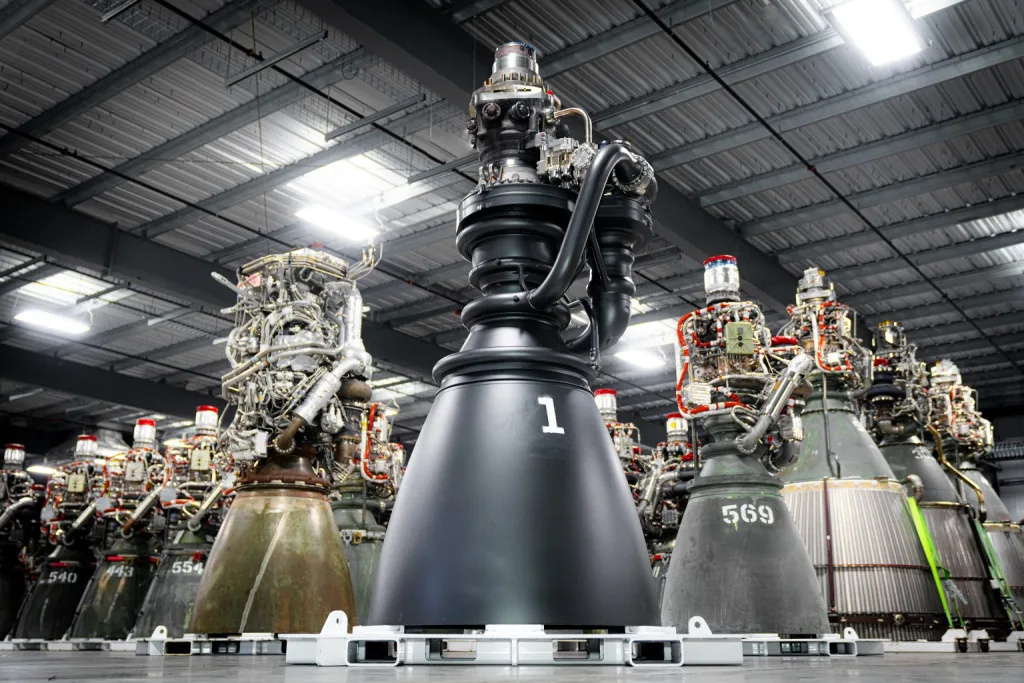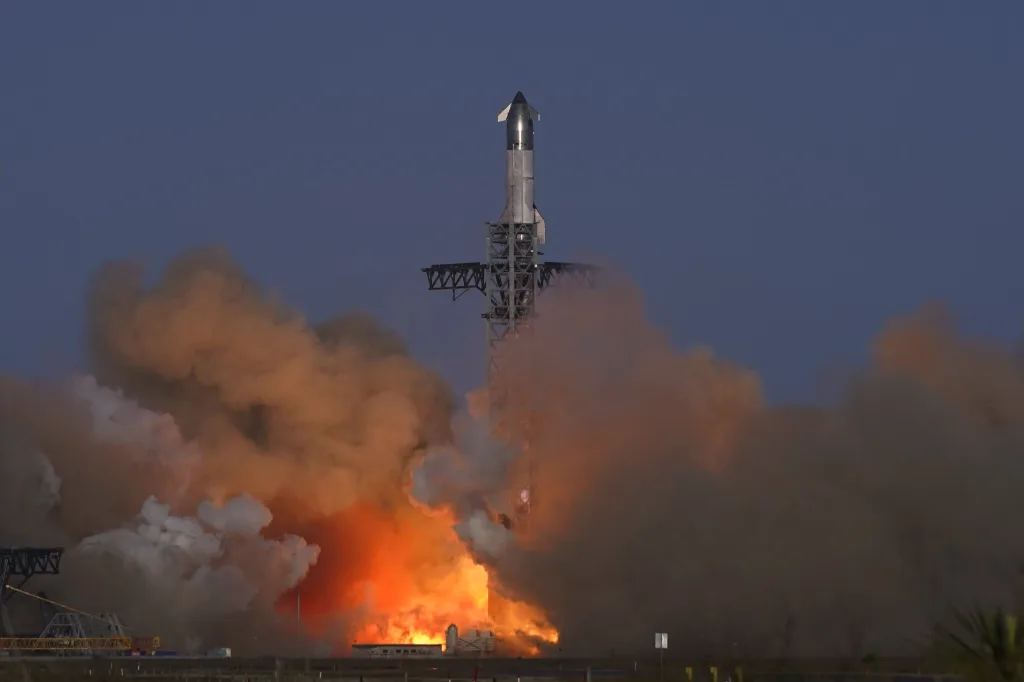By :SpaceEyeNews.
SpaceX’s Starship Flight 8 was supposed to be another critical milestone in humanity’s journey to the Moon, Mars, and beyond. But instead, it ended in a fiery cascade of debris over the Atlantic Ocean. Millions watched in disbelief as the upper stage of the rocket—called “Ship”—was lost just minutes into flight.
Now, two and a half months later, SpaceX has revealed exactly what caused the explosion. And it wasn’t just a random failure—it was the kind of hardware malfunction that teaches engineers how to build better spacecraft. With those lessons now implemented and reviewed by multiple agencies, the Federal Aviation Administration (FAA) has officially cleared Starship Flight 9 for launch on May 27, 2025.
This article takes you deep inside the investigation that uncovered the root cause of the failure, the technical fixes now applied, and what this means for the future of Starship—and for space exploration at large.
Why Starship 8 Exploded—and How SpaceX Fixed It!
🚀 What Happened During Flight 8?
Starship Flight 8 launched on March 6, 2025, from Starbase, SpaceX’s launch and development facility in Boca Chica, Texas. The mission was designed to simulate the deployment of four Starlink test payloads, with a splashdown of the upper stage in the Indian Ocean, approximately 50 minutes after liftoff.
The flight began as expected. The Super Heavy booster—Starship’s first stage—successfully powered the vehicle into the upper atmosphere and initiated a boostback maneuver to return to the launch site. The booster was intended to be caught by the launch tower’s iconic “Mechazilla” arms, just like in Flight 7.
Meanwhile, the upper stage, Ship, continued its ascent. But roughly 17.5 minutes into the mission—just before payload deployment—a flash was detected near one of the vehicle’s three center-mounted Raptor engines.
This “flash” wasn’t a harmless spark. It triggered a catastrophic sequence of events: a hardware failure led to uncontrolled propellant mixing and ignition, causing one Raptor engine to shut down. The remaining two sea-level engines shut down seconds later, followed by one of the vacuum-optimized Raptors. The result? Loss of thrust, rapid tumbling, and the activation of the flight termination system. Within two minutes, the spacecraft was intentionally destroyed over the Atlantic for safety reasons.

🔬 Root Cause: Raptor Engine Hardware Failure
Following the explosion, SpaceX immediately began a detailed failure investigation. Using flight data, engine logs, and telemetry from both onboard sensors and ground-based monitoring systems, engineers narrowed the failure down to the “business end” of Ship—its powerful six-engine array, featuring three sea-level and three vacuum Raptor engines.
The most probable root cause, according to SpaceX, was a hardware defect in one of the center sea-level Raptor engines. This issue allowed liquid methane and liquid oxygen (LOX) to mix unintentionally within the engine section. This mixing occurred in a region of the engine not designed for ignition, causing a flashover—a rapid combustion event that severely damaged internal components and forced automatic shutdowns.
This was not a simple software bug or miscalculation. It was a physical failure resulting from thermal stresses, plumbing design limits, and insufficient insulation in high-risk zones.
Interestingly, this was a very different failure mode than what happened in Flight 7. That flight ended in failure due to a propellant leak and fire in the vehicle’s upper “attic” area. In contrast, Flight 8’s issue originated in the engine “basement,” which made it even more critical to solve since this is where maximum thrust, heat, and pressure occur.

🛠️ The Investigation: 100+ Raptor Engine Tests
To validate their findings, SpaceX launched a massive R&D effort at its McGregor, Texas test facility. Over 100 long-duration Raptor engine tests were conducted in various environmental and thermal conditions to reproduce the fault and validate corrective measures.
This wasn’t done in isolation. The FAA, NASA, National Transportation Safety Board (NTSB), and U.S. Space Force all participated or observed different parts of the investigation. The goal was clear: not only identify what went wrong, but ensure future Starship flights would be safer and more reliable.
The investigation confirmed three key contributors to the failure:
- Thermal insulation limitations in critical joints.
- Lack of purging systems to prevent flammable gas accumulation.
- Drainage issues in the propellant plumbing, which allowed unintentional LOX-methane contact in high-heat zones.
🧰 Fixes and Upgrades: Enter Raptor 3
SpaceX didn’t just patch the problem—they used it to push Starship closer to operational maturity. Here are the main fixes:
1. Thermal Insulation Enhancements
Critical components near the engines have been reinforced with additional heat shielding and insulation to handle higher-than-expected thermal loads.
2. New Nitrogen Purge System
To prevent gas pockets from igniting, engineers installed a nitrogen-based purge system, flushing out unwanted methane and oxygen from engine cavities.
3. Improved Propellant Drainage
The drain system was redesigned to allow faster and more complete removal of residual cryogenic fluids, especially during transitions in flight phases.
4. Structural Joint Preload
Key joints that experienced micro-flexing under thermal load have been tightened with preload enhancements to prevent gas leaks.
5. Raptor 3 Engine Integration
Perhaps the most exciting change is the introduction of the new Raptor 3 engine series. These feature:
- Better cooling pathways.
- Hardened combustion chambers.
- Enhanced reliability across multiple ignitions.
- Improved real-time diagnostics and self-correction protocols.
🔄 Booster Lessons: Fixing the Super Heavy Side
While the explosion drew focus to the upper stage, the Super Heavy booster also had issues during Flight 8. Only 11 of 13 engines successfully reignited for the boostback burn. During landing, 12 engines re-lit, including one that failed during boostback.
SpaceX traced these issues to torch igniter problems, exacerbated by high thermal loads during engine restarts. As a result:
- Igniter insulation was improved.
- Ignition sequencing logic was revised.
- Cooling cycles between engine burns were extended slightly for reliability.
This marks a clear move toward booster reusability and engine restart control, critical for rapid launch-and-reuse scenarios.
📆 Starship Flight 9: What to Expect
With all issues addressed and verified, the FAA granted SpaceX official flight clearance on May 22, 2025.
Flight 9, scheduled for May 27, will be historic for several reasons:
- It will be the first time SpaceX reuses a flight-proven Super Heavy booster in the Starship program.
- It will test all the newly implemented upgrades from engine to plumbing systems.
- The upper stage will once again simulate Starlink payload deployment, followed by a controlled splashdown in the Indian Ocean.
- The flight will feature Mechazilla catch upgrades for better alignment and catch accuracy.
If successful, this will be the most complex and high-confidence Starship test yet, showing not just recovery from failure—but massive improvement.
🌍 Why This Matters: More Than Just a Rocket
Starship isn’t just another launch vehicle. It’s a keystone for NASA’s Artemis program, a cornerstone of SpaceX’s Mars ambitions, and potentially the future platform for satellite megaconstellations, deep-space cargo transport, and human exploration beyond Earth orbit.
Its 100% reusability could slash launch costs by a factor of 10 or more, enabling things that were once purely science fiction—like lunar bases and interplanetary supply chains.
Every flight, even failed ones like Flight 8, plays a role in achieving that goal. The speed and transparency of SpaceX’s investigation, paired with the FAA’s willingness to reauthorize flights, shows that failures in spaceflight aren’t the end—they’re the way forward.
📎 Final Thoughts
With the investigation complete, systems upgraded, and approval granted, Starship is ready to rise again. Flight 9 is more than a test—it’s a statement that progress doesn’t stop when things go wrong. It accelerates.
Stay tuned to SpaceEyeNews for full launch coverage, live updates, and expert breakdowns. If Flight 9 succeeds, we may be witnessing the moment when humanity takes another confident step toward becoming a multi-planetary species.
References:
https://spacenews.com/spacex-blames-starship-flight-8-mishap-on-engine-hardware-failure/